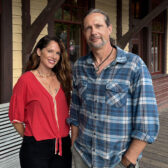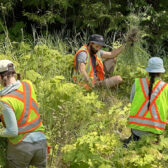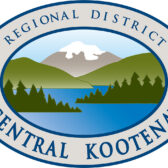For many in B.C. the dream of a white picket fence is dead
While everyone’s been furiously pointing fingers at each other over Vancouver’s skyrocketing house prices, little attention has been paid to the other side of most real estate transactions: the pay stub.
You could be forgiven for thinking that a few politicians rely a bit too much on their childhood memories of the good times, when B.C. was a land of plenty to them.
It’s been quite a tumble ever since, as figures from Statistics Canada show all too well.
Back in 1980, when many of B.C.’s decision-makers would have been in university, Vancouver at $63,000 had the fourth highest median household income out of Canada’s 27 census metropolitan areas (CMAs). The average was $58,400.
By 2000, Vancouver had fallen to ninth place. Household income – in real terms – also took a dip to $62,900, just a few hundred dollars above the $62,300 average.
And them the bottom fell out.
By 2012, with a median household income of $71,140, Vancouver was in 24th place out of 28 CMAs, more than 10 per cent off the $79,815 average. Abbotsford-Mission was dead last with a household income of $66,550.
Provincially, the drop in rank is less dramatic, but in terms of income growth more alarming.
In 2000, B.C. was in third place among the provinces with a median household income of $61,506. By 2012, B.C. had dropped to fourth with $71,660.
But in terms of percentage growth, only Ontario at 9.5 per cent was behind B.C. at 16.5 per cent.
The three other western provinces left us in the dust: Manitoba (23.9 per cent), Alberta (40 per cent) and Saskatchewan (44.8 per cent).
While incomes have stagnated in B.C., the cost of living hasn’t.
Between 2000 and 2012, average household expenditures rose by 34.4 per cent from $55,670 to $74,837.
Even though median and average are not the same thing, putting them side by side is telling.
In 2000, the median household income in B.C. was $61,506 and average household expenditures were $55,670. By 2012, median income was $71,660 and household expenditures were $74,837.
Some may think that can’t be. Unfortunately, it can.
According to the Canadian Payroll Association’s 2014 survey, 44 per cent of those employed in B.C. are spending “all of, or more than, their net pay.”
Forty-seven per cent are living pay cheque to pay cheque.
A 2014 study by Sands & Associates, a Vancouver-based trustee and bankruptcy firm, found that many British Columbians are going into debt to buy necessities.
Average household debt in B.C. rose by $20,745 in 2014 to $99,834, according to BMO’s Annual Debt Report, the second highest debt load in Canada.
So put aside all the sensational headlines coming out of Vancouver that focus on price and think income, mortgage qualifying income, keeping in mind that B.C.’s median household income in 2012 was $71,660.
According to RBC Economics’s Housing Trends and Affordability report released this week, the only province where you need a six-figure income ($125,900) to buy a detached bungalow is B.C.
You would also feel the pinch of 69.3 per cent of your household income going to cover mortgage payments, utilities and property taxes, and that’s after coming up with a $172,250 down payment.
In six provinces you could buy a detached bungalow on an income of less than $70,000, a down payment of no more than $78,425, with a maximum of 35.6 per cent of your income going to home ownership costs.
While Vancouver gets the bulk of the attention in the current debate, there’s a housing crisis developing across B.C.
In 2014, the average house price in Fort St. John was $376,000. That’s higher than the average price of a detached bungalow in Saskatchewan, Manitoba, Quebec, and all of Atlantic Canada.
Renting isn’t much of an escape. According to CMHC figures, a two-bedroom apartment in Kitimat rents for $110 more than the average in Surrey.
Across Metro Vancouver, the average rent for a two-bedroom apartment rose by 41.7 per cent between 2000 and 2012 from $890 a month to $1,261. Median household income rose by 13.1 per cent.
It’s time to face facts. For many in B.C. the dream of a white picket fence is dead. The only thing left is to administer the last rites and find some alternatives.
Dermod Travis is the executive director of IntegrityBC. www.integritybc.ca
Links:
1980/2000 median household income statistics by CMA
http://www.statcan.gc.ca/pub/75-001-x/10504/6868-eng.pdf
2012 median household income statistics by CMA
http://www.statcan.gc.ca/tables-tableaux/sum-som/l01/cst01/famil107a-eng.htm
2000 median household income statistics by province
http://www12.statcan.gc.ca/census-recensement/2006/dp-pd/tbt/Rp-eng.cfm?LANG=E&APATH=3&DETAIL=0&DIM=0&FL=A&FREE=0&GC=0&GID=0&GK=0&GRP=1&PID=96428&PRID=0&PTYPE=88971,97154&S=1&SHOWALL=0&SUB=0&Temporal=2006&THEME=68&VID=0&VNAMEE=&VNAMEF=
2012 median household income statistics by province
http://www.statcan.gc.ca/tables-tableaux/sum-som/l01/cst01/famil108a-eng.htm
RBC report
http://www.rbc.com/newsroom/_assets-custom/pdf/20150622-HA.pdf
Fort St. John
http://fortstjohn.com/real-estate
Kitimat rents
http://www.kitimat.ca/assets/Residents/PDFs/HOUSING%20FACTS%202014%20July.pdf
Metro Vancouver rents
http://www.metrovancouver.org/services/regional-planning/PlanningPublications/ApartmentAverageRentsTwoBedroom.pdf

























